How car springs and dampers work
The Video Course teaches you everything about modern cars.
The suspension system affects both the driver's control of the car and the comfort of the occupants. The springs allow the wheels to move up to absorb bumps in the road and reduce jolting, while the dampers prevent bouncing up and down. Various mechanical links keep the wheels in line.
Types of spring
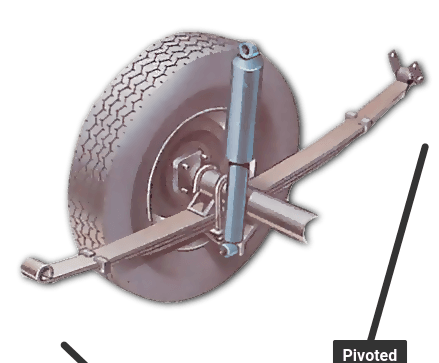
Most cars have steel springs, and the oldest type is the leaf spring . The topmost and longest strip, the master leaf, is curled at each end into an eye by which it is connected to the frame . The leaves below are progressively shorter and less curved.
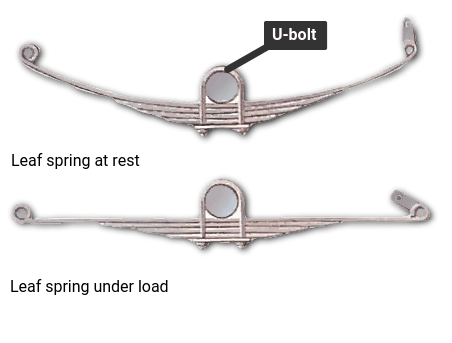
As the spring deflects, it flattens, causing the second leaf to touch the master leaf, then the third to touch the second. The spring thus becomes progressively stiffer. Such a spring gives a smoother ride than a stiff, plain single leaf could.
In some cars the multi-leaf spring has been replaced by a special single leaf that is tapered in section and has progressive stiffness as it is deflected.
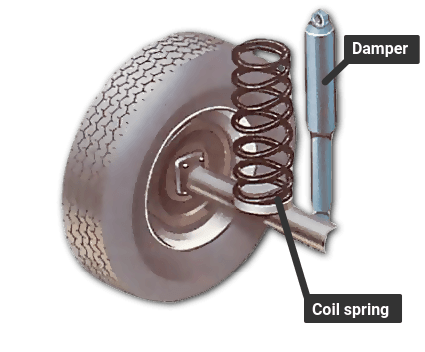
A coil spring is simply a spiral of resilient steel rod. It is stretched or compressed by the vertical movement of the wheels.
The torsion bar is a length of spring steel with splined or square ends. One splined end is fixed to a lever arm that forms part of the suspension. The bar rotates as the lever arm moves up and down.
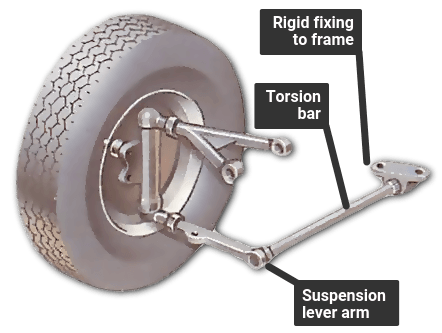
The other splined end is fixed to the frame. The splines stop the bar turning in its fixings. Instead, the bar has to twist as the suspension deflects.
In all forms of steel spring, the forces set up by road shocks are stored by the spring deflection rather than passed on to the passengers. The forces are then released gradually to restore the car to a level ride.
Rubber springs can perform the same function, but they do not store as much energy and are therefore used on light vehicles only.
A form of hydraulic suspension can be combined with rubber springs to refine the system. Up-and-down movement of the wheel pumps fluid from one chamber to another through a damper valve . Each chamber has a flexible diaphragm with compressed gas on the other side of it.
The gas is compressed further as fluid comes into the chamber through the valve. In effect the gas is acting as a pneumatic spring.
There is usually a link tube through which some of the fluid pumped out of a front-wheel chamber travels to the rear wheel on the same side to equalise the suspension.
Citroen hydraulic suspension can be pumped up and down to raise or lower the car to a desired height.
Dampers

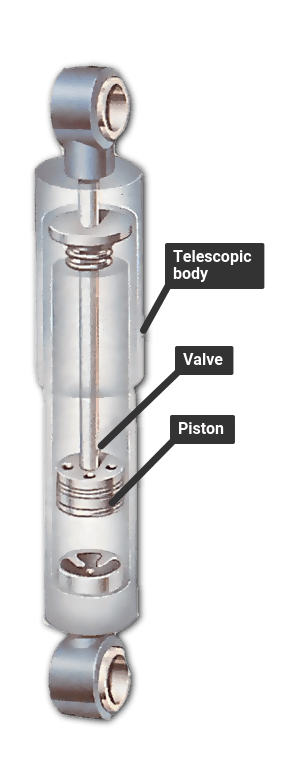
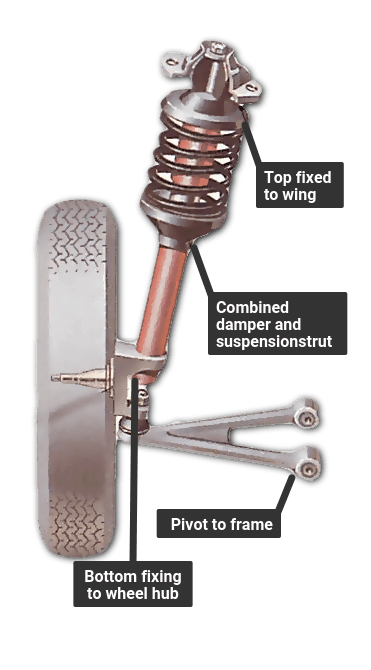
Springs deflect as the car goes over a bump, then bounce back. The car would continue to bounce up and down if the energy stored in the springs were not dissipated in some way.
Dampers - commonly called shock absorbers - perform this function. A damper has a piston which moves inside a sealed, oil-filled cylinder with the up-and-down movement of the wheel.
There are narrow control passages and one-way valves in the piston, which allow oil to flow through it from one chamber to another - but only very slowly.
This action slows down the spring oscillations and returns the car to a level ride.
There are three types of damper. Telescopic dampers look like telescopes and shorten in the same way. One end is bolted to the axle , the other to the body.
Strut inserts are similar, but are designed to fit inside a MacPherson strut (See Renewing MacPherson-strut inserts ).
Lever-arm dampers resemble hydraulic door closers. The damper, which contains one or two pistons, is fixed to the car body or frame, and a pivoted lever extends from it to the axle.
Some cars have dampers that contain both oil and gas. These act more efficiently than oil-filled dampers.
The Ultimate Car Mechanics video course
Learn everything about modern cars from our new video series.
Learn more >-
We build a Mazda MX5 Miata from scratch
We start by tearing down and then rebuilding the whole car.
-
Every part explained
There's ridiculous detail on every part. Clearly and easily explained.
-
All modeled in 3D
We've created the most detailed 3D model ever produced so we can show you everything working.






